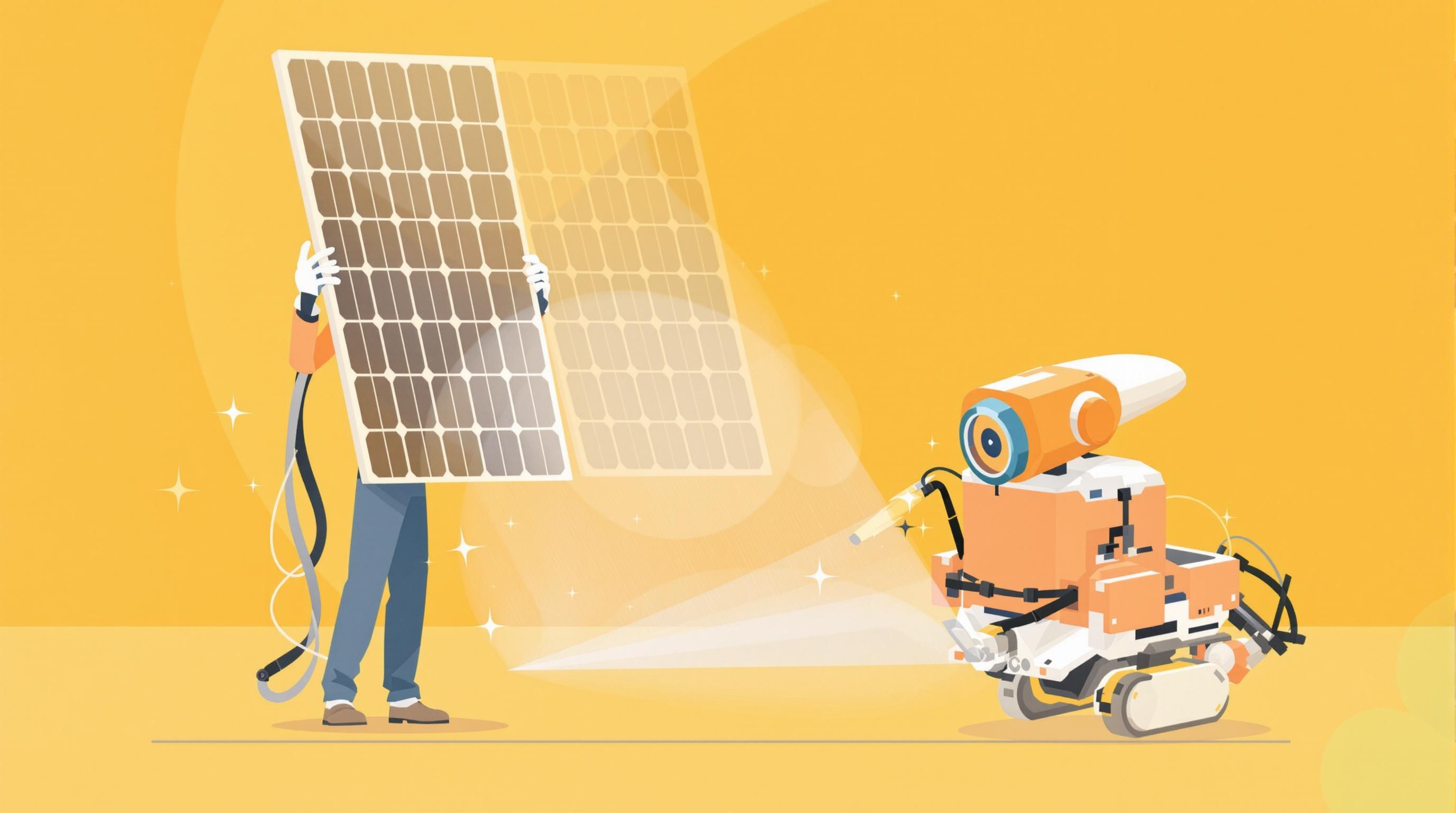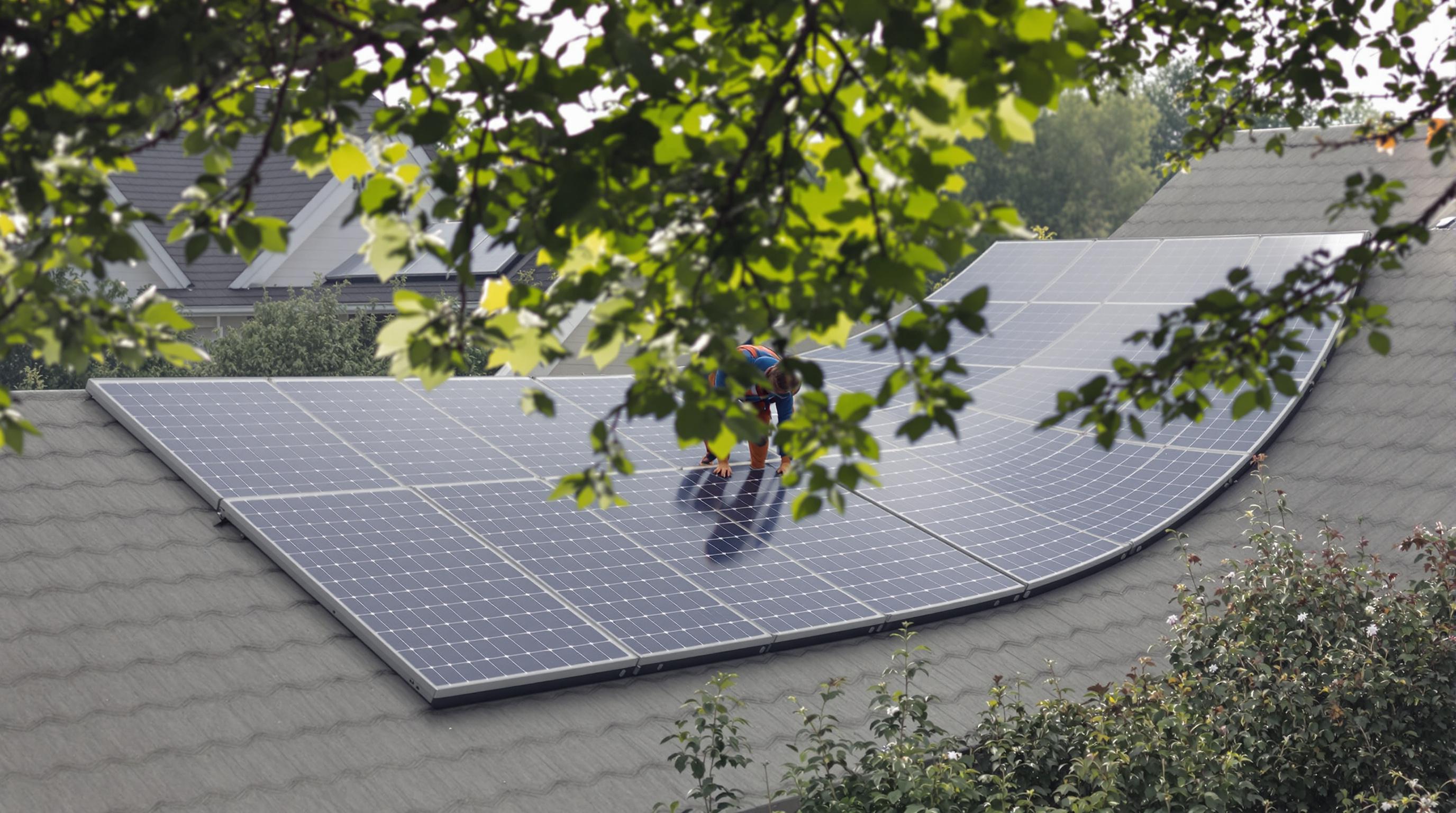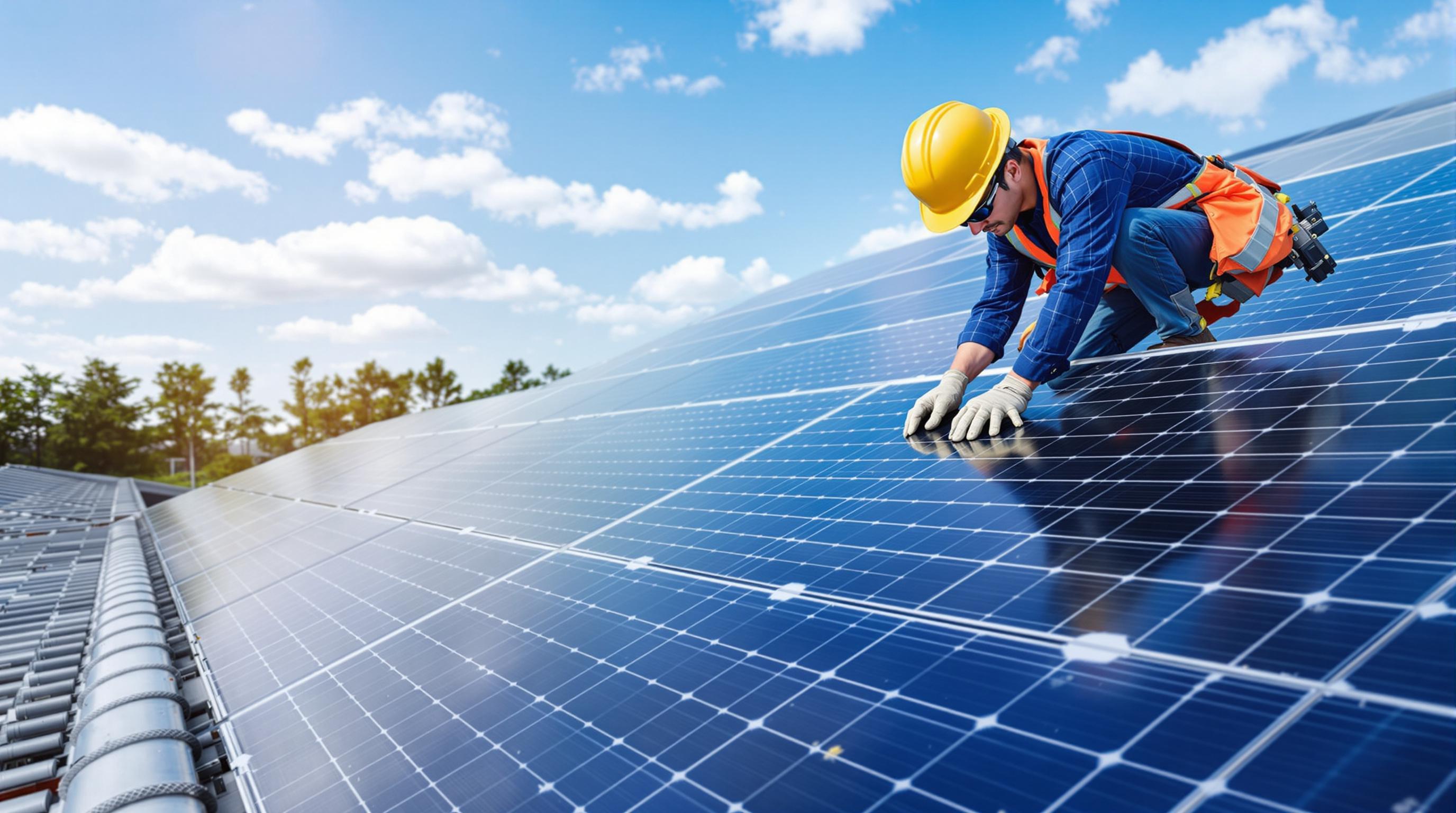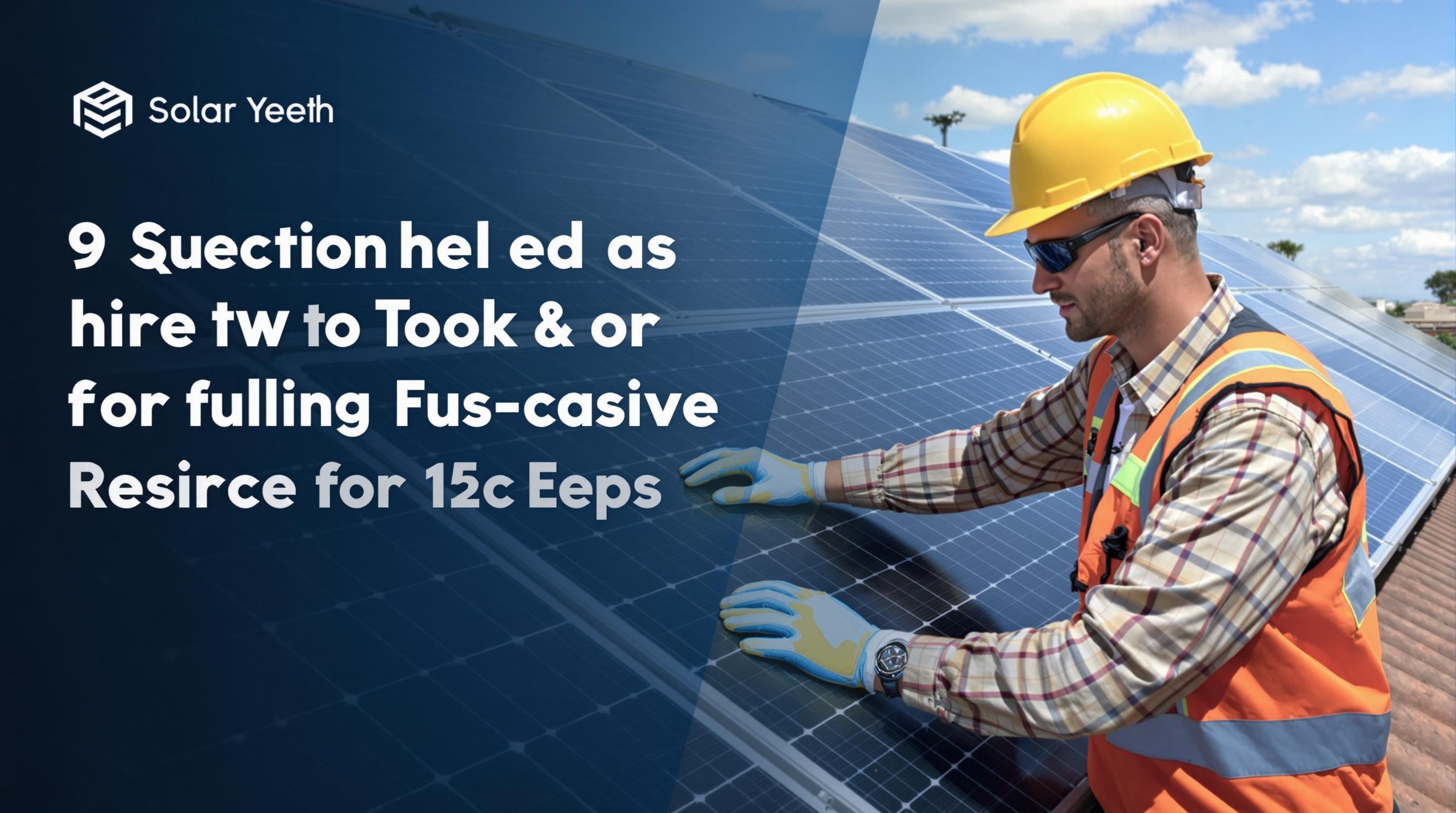Related Articles
- 6 Revolutionary Solar Panel Cleaning Robots Since 2019 Rated for Efficiency and Contractor Appeal
- How Unexpected Weather Patterns Are Shaping Homeowner Choices in Solar Installation Partnerships
- How Solar Inverter Noise Pollution Affects Urban Wildlife and What Manufacturers Are Overlooking
- How Solar Inverters Influence Home Resale Value and What Buyers Rarely Consider Before Purchase
- How Microclimates Secretly Shape Solar Energy Output in Unexpected Urban and Rural Landscapes
- The Quiet Role of Microclimates in Shaping Solar Harvesting Outcomes Beyond Conventional Efficiency Measures
6 Revolutionary Solar Panel Cleaning Robots Since 2019 Rated for Efficiency and Contractor Appeal
6 Revolutionary Solar Panel Cleaning Robots Since 2019 Rated for Efficiency and Contractor Appeal
Since 2019, the solar panel cleaning robot market has witnessed groundbreaking innovation, combining cutting-edge technology with practical efficiency. Below, we explore six revolutionary models, rated for performance and contractor appeal, that are reshaping maintenance in solar energy.
Anecdotes From the Field: The Solar Panel Contractor's Perspective
"I used to spend hours manually cleaning arrays under the blazing sun—often risking injury and inconsistent results," recounts Jeff Carlson, a solar contractor with over 15 years of experience. When his company adopted the Ecoppia E4 robots in 2020, productivity jumped by nearly 40%. This shift reflects a growing trend where contractors prioritize automation to increase efficiency and reduce labor costs.
The Ecoppia E4: Silent Efficiency Meets Waterless Technology
Perhaps the most talked-about player in the robotic cleaning domain, the Ecoppia E4 debuted its waterless cleaning technology in 2019. Operating quietly during nighttime, these robots use microfiber brushes and electrostatic techniques to remove 99% of dust and dirt, significantly enhancing solar panel output — a fact verified by a 2021 report from the National Renewable Energy Laboratory (NREL).
The E4’s smart navigation system allows it to autonomously cover vast solar farms with minimal human supervision.
Case Study: How Ecoppia Robots Transformed a Moroccan Solar Farm
In Ouarzazate, Morocco, the Noor Solar Plant utilized a fleet of Ecoppia robots to tackle the harsh desert dust. Within six months, energy yield improved by 5-7%, translating into an annual revenue increase of approximately $2.3 million. According to project engineers, these robots saved thousands of liters of water annually, underscoring environmental benefits alongside financial ones.
Sweeping Differences: From Manual Labor to AI-Driven Scrubbing
Remember the days when solar panel cleaning meant scaffolding, ladders, and buckets of water? Thankfully, those times are quickly fading. With artificial intelligence embedded in robots like the SunPower ARKA-i and Sergei Tech’s Solar CleanBot, the clean becomes smarter and faster. These bots analyze panel dirt patterns and optimize cleaning paths, ensuring no spot goes untouched.
SunPower ARKA-i: Advanced Object Detection Meets Rugged Design
The ARKA-i integrates LIDAR and infrared sensors to detect obstacles such as bird droppings and pollen accumulation. Released in mid-2020, it operates on steep inclines up to 30 degrees, making it ideal for uneven or hilly solar installations. Remarkably, contractors report it requires only 10% of the labor time that manual cleaning demands.
Progress Meets Portability: The Solar Nova Swift
On the smaller end of the spectrum, the Solar Nova Swift targets residential use with a lightweight, battery-powered design. Launching in early 2022, this robot appeals to homeowners and small contractors due to its affordability and easy portability. While it cleans less area per charge than industrial robots, its 85% cleaning efficiency outperforms manual methods, making it a compelling choice for small-scale users.
Statistics You Can't Ignore
A 2023 survey by SolarPower Europe revealed that automated cleaning increased solar panel efficiency by an average of 6.4%, compared to only 3.2% for manual cleaning. Additionally, investment in cleaning robots is expected to grow at a CAGR of 13% through 2027—a clear indicator of rising industry confidence.
Meet “Dusty”—The Quirky Pioneer With Unexpected Charm
Launched in 2019, “Dusty” wasn’t the most advanced but certainly one of the most entertaining solar cleaning robots to come out of the emerging market. Resembling a small, rolling vacuum cleaner with googly eyes, Dusty made headlines more for its humorous marketing and educational outreach than raw performance.
Its cleaning efficiency peaked at 70%, but Dusty helped raise awareness about the importance of panel maintenance among residential users. Although discontinued in 2021, “Dusty’s” legacy lives on as proof that even robots can have personality.
Introducing HelioSweep: The Industry’s Heavyweight Champion
If you want brute strength paired with precision, HelioSweep’s 2023 model boasts a brush-and-water hybrid system that adapts to various grime types. The dual-mode cleaning led to a 12% greater energy uplift in independent testing by the German Fraunhofer Institute.
HelioSweep also features remote diagnostics that help contractors monitor multiple units through a centralized dashboard, reducing onsite personnel requirements by up to 25%.
Environmental Impact and Water Conservation
Why does water usage matter when cleaning solar panels? Some regions face severe drought conditions, making water-intensive cleaning unsustainable. That’s a major reason why innovations like Ecoppia’s waterless technology and HelioSweep’s efficient water recycling have become game-changers.
Across the six robots featured, water savings can reach up to 90% compared to traditional manual washing methods. This not only benefits the environment but also cuts operating costs significantly. According to a study published in Renewable Energy Journal, farms adopting robotic cleaning systems saw a 35% reduction in water consumption overall.
Contractor Appeal: What Makes These Robots Market Winners?
For contractors, efficiency, reliability, ease of use, and customer appeal are paramount. The robots we’ve discussed rank highly because they address those pain points:
- Automated operations reduce labor demands—cutting costs.
- Remote monitoring minimizes travel to remote sites.
- Improved cleaning results enhance client satisfaction.
- Environmentally friendly features meet increasing regulatory requirements.
Jeff Carlson sums it up: “Integrating these robots not only made my crew’s job safer but also boosted our contract renewals.”
Final Thoughts: The Future Sparkles Cleaner
As solar power adoption accelerates worldwide, the maintenance ecosystem is evolving rapidly. These six solar panel cleaning robots showcase how intelligent design and real-world application converge to solve an age-old problem: keeping panels spotless and generating at peak output.
Whether you are a contractor managing large solar farms or a homeowner wanting to maximize your rooftop array’s efficiency, automated solar cleaning robots offer tangible benefits in productivity, environmental stewardship, and cost savings.
About the Author
Written by Emily, a 29-year-old sustainable technology enthusiast and freelance writer who combines passion for green energy with an informal, approachable style that empowers readers of all ages to embrace the future of renewable technology.




